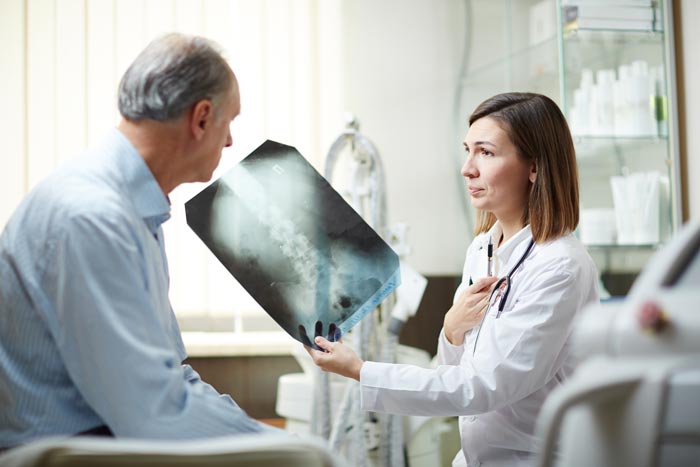Diagnosing & Treating Spinal Stenosis
In addition to X-rays, these other tests may be used to diagnose spinal stenosis:
Magnetic Resonance Imaging
Magnetic resonance imaging (MRI) scans are the best tools for diagnosing stenosis. An MRI uses magnetic fields and radio-frequency waves to create an image of the spine, and can reveal the details of the spinal canal. An MRI scan can also show evidence of previous injuries that may have healed and other details in the spine that can’t normally be seen on an x-ray.

Myelogram
This special x-ray uses dye, which is injected into the spinal fluid. This can identify spinal stenosis. Usually a CT scan follows the myelogram.
Computerized Tomography
Computerized tomography (CT) is a noninvasive procedure that uses x-rays to produce a three-dimensional image of the spine and identify spinal stenosis.
Electromyogram and Nerve Conduction Studies (EMG/NCS)
This test measures the electrical activity in the nerves and muscles. It may identify if there is nerve damage or nerve compression.
Spinal Stenosis Specialists
At Och Spine at NewYork-Presbyterian/Weill Cornell Medical Center, our specialists have advanced training in treating conditions of the spine. We can also provide second opinions on a diagnosis. (See Doctors Who Treat Spinal Stenosis.)
We’ve Got Your Back
For more information about our treatment options, contact our office today.



